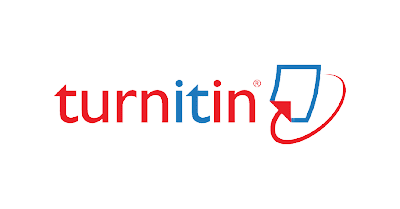RANCANG BANGUN KARYA SENI POLA UBIN MODEL FRAKTAL DARI POLA DUA DAN TIGA GARIS GENERIK DENGAN TEKNIK REFLEKSI HORIZONTAL-VERTIKAL DAN DIAGONAL
Abstract
This research is done based on the needs of designing artworks that are easy to do through computer programs. The method used is a development method with two stages, namely the stage of duplication of generic data code and the stage of horizontal-vertical and diagonal reflection of images obtained from phase one to produce symmetrical images in subsequent phases. Tile pattern symmetrical drawing artwork can be designed and constructed with fractal models through generic two- and three-line patterns. The self-similarity properties of generic fractal objects can be duplicated through the reflection of horizontal-vertical and diagonal directions. Tile pattern artwork can be built in several phases with horizontal-vertical and diagonal mirroring before coloring. This tile pattern artwork is a visualization of object data in the form of recyclable Affine coefficients.
Downloads
References
Barnsley, M.,F. 1993. Fractals Everywhere. Morgan Kaufmann, 2nd Edition
Chen, Z. 2020. Application of Iteration Function System for Ceramic Tile Design. IEEE International Conference on Parallel & Distributed Processing with Applications, Big Data & Cloud Computing, Sustainable Computing & Communications, Social Computing & Networking
Darmanto, T. 2016a. “Perancangan Motif Batik Dengan Model Fraktal IFS”. Seminar Nasional Informatika dan Aplikasinya, Universitas Jenderal Achmad Yani.
Darmanto, T. 2014. Building Symmetrical Art Image by Multi-object of Fractal Model based on Mirroring Methods. Seminar Nasional Ilmu Pengetahuan dan Teknologi Jenderal Achmad yani (SNIJA), Universitas Jenderal Achmad Yani.
Darmanto. T. 2015. Rancangan Pola Ubin dari Model Fraktal IFS dengan Teknik Pengubinan sebagai Karya Seni Berdasarkan Pendekatan Rancangan Rotasi dan Pencerminan Empat Collage. Seminar Nasional Ilmu Pengetahuan dan Teknologi Jenderal Achmad yani (SNIJA), Universitas Jenderal Achmad Yani.
Darmanto, T. 2016b. Animating Fractal of Things: Based on IFS Fractal Model. Lambert Academic Publishing, ISBN: 978-3-659-86851-1, @2016 OmniScriptum GmbH & Co.KG
Darmanto, T. 2021. Artistic Characters Generated by Fractal Model Based on the Composition of Components in Grid, 2nd International Seminar of Science and Applied Technology
Dongdong, L. 2012. The Study on Fashion Art Design based on Fractal Pattern. IEEE International Conference on Computer Science and Automation Engineering
Frettloh, D. 2002. Selfsimilar Tilings With Integer Factor. University of Dortmund; Symmetry: Art and Science Journal; Vol.2
Hu, Y., & Chen, M. 2019. Pattern Design of Yi Nationality Lacquerware Based on Fractal Algorithm. International Conference on Electronic Engineering and Informatics
Jiao, B. 2010. Study on Graphics Design Based on Fractal Theory. International Conference on Signal Processing Systems
Kharbanda, M., & Bajaj, N. 2013. An Exploration of Fractal Art in Fashion Design. International Conference on Communication and Signal Processing
Long, X, et.al. 2009. Design and Application of Fractal Pattern Art in the Fashion Design. International Workshop on Chaos-Fractals Theories and Applications
Malishevsky, A. 2020. Applications of Fractal Analysis in Science, Technology, and Art: A Case Study on Geography of Ukraine, IEEE 2nd International Conference on System Analysis & Intelligent Computing
McManus, C. 2005. Symmetry and Asymmetry in Aesthetics and the Arts. University Collage London
Meng, G.L., et.al. 2012, Textile Pattern Design Based on IFS. Applied Mechanics and Materials, 251, 239-243, 2012, doi: 10.4028./www.scientific.net/amm.251.239
Wei, H., et.al. 2009. The Research of Fractal Compensating in the Coarse of Graphics Rebuilding. International Conference on Future BioMedical Information Engineering
Xiao, H.R. 2013. Application Study of Fractal Figures Based on Iterated Function System Algorithm. Advanced Materials Research, 694-697, 2886-2890, 2013, doi: 10.4028/www.scientific.net/amr.694-697.2886
Xu, S., et.al. 2009. Application of fractal art for the package decoration design. IEEE 10th International Conference on Computer-Aided Industrial Design & Conceptual Design, 2009, doi: 10.1109/caidc.2009.5375057
Xue, W.R. 2020. Application research of digital fractal image technology in intelligent art design. International Conference on Big Data & Artificial Intelligence & Software Engineering
Yang, L., et.al. 2008. Decorative Pattern Design of Ceramic Based on Cloud Model and Fractal Art. 9th International Conference on Computer-Aided Industrial Design and Conceptual Design
Zhang, L., et.al. 2019. A kind of IFS fractal image generation method based on Markov random process, International Conference on Computation, Communication and Engineering.
Copyright (c) 2023 Tedjo Darmanto, Rizal Sopandi, Herdi Yunirwan

This work is licensed under a Creative Commons Attribution-ShareAlike 4.0 International License.
Jurnal allows anyone to compose, correct, and do derivative works, even for commercial purposes, as long as they credit for the original work. This license is the freest. It is recommended for maximum distribution and use of licensed material.
The submitted paper is assumed not to contain any proprietary materials that are not protected by patent rights or patent applications; The responsibility for technical content and protection of proprietary materials rests with the authors and their organizations and not the responsibility of journal or its editorial staff. The primary (first/appropriate) author is responsible for ensuring that the article has been viewed and approved by all other authors. The author's responsibility is to obtain all necessary copyright waivers to use any copyrighted material in the manuscript before submission.
Jurnal Pendidikan, Sains dan Teknologi allows the author(s) to hold the copyright without restrictions and allow the author(s) to retain publishing rights without restrictions. Jurnal Pendidikan, Sains dan Teknologi CC-BY-SA or an equivalent license as the optimal license for the publication, distribution, use, and reuse of scholarly work. Jurnal Pendidikan, Sains dan Teknologi allows the author(s) to hold the copyright without restrictions and allow the author(s) to retain publishing rights without restrictions. Jurnal Pendidikan, Sains dan Teknologi CC-BY-SA or an equivalent license as the optimal license for the publication, distribution, use, and reuse of scholarly work.
In developing strategy and setting priorities Jurnal Pendidikan, Sains dan Teknologi recognize that free access is better than priced access, libre access is better than free access, and libre under CC-BY-SA or the equivalent is better than libre under more restrictive open licenses. We should achieve what we can when we can. We should not delay achieving free in order to achieve libre, and we should not stop with free when we can achieve libre.
Jurnal Pendidikan, Sains dan Teknologi is licensed under a Creative Commons Attribution-ShareAlike 4.0 International License.
You are free to:
- Share a copy and redistribute the material in any medium or format
- Adapt a remix, transform, and build upon the material for any purpose, even commercially.
- The licensor cannot revoke these freedoms as long as you follow the license terms.






